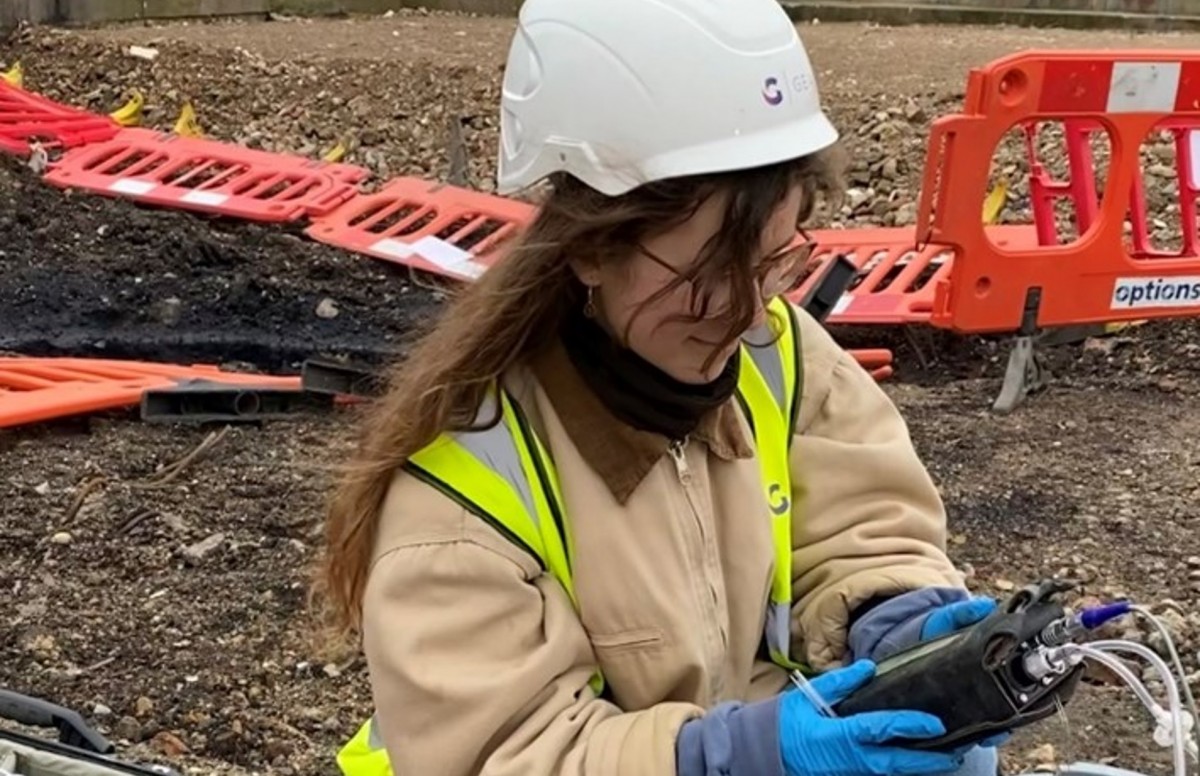The 15-Second Trick For Geotheta
The 15-Second Trick For Geotheta
Blog Article
Some Of Geotheta
Table of Contents6 Simple Techniques For GeothetaThe Single Strategy To Use For GeothetaGeotheta Fundamentals ExplainedGeotheta Things To Know Before You Buy
They work together with civil engineers, architectural designers, designers, and various other experts to integrate geotechnical factors to consider right into the general project layout and construction process. This calls for efficient teamwork, coordination, and interaction to guarantee that the geotechnical aspects straighten with the job objectives and meet regulative demands.Mining & Materials Engineering: Concepts of drilling, penetration prices, and aspects affecting the selection of exploration technique. Attributes of explosives, firing systems and blast patterns. Blowing up techniques in surface and underground functions. Special blasting strategies at excavation borders. Vibration and sound control. Mechanical and constant techniques to fragmentation, including longwall shearing and fullface boring.
Modelling of fragment and fragment size circulations; comminution as a transfer feature. Comminution technology: squashing, grinding, dimension category. Integrated analysis of fragmentation and comminution operations. Used by: Mining & Products Design.
Some Known Details About Geotheta
Bachelor's level programs in civil, geotechnical, geological, and environmental engineering typically last four years and consist of basic education and learning training courses in English, social scientific research, and the liberal arts, along with courses in advanced mathematics, structural geology, and liquid mineralogy. (https://www.openstreetmap.org/user/geotheta)
Geotechnical design entails the assessment of the soil and rock conditions at a specific website, and their effects for the growth of that website. As many structures count on the ground for assistance, it is without surprise that a comprehensive understanding of the ground conditions, and the suitability of foundation systems, are crucial to the lasting security and efficiency of the structure or framework.
Being experts in the examination of geological developments and ground behavior, geotechnical designers do clinical examinations and screening to comprehend the effect these geological developments may have on the style and building of building, civil and infrastructure projects. This experience is critical for the design and construction of buildings, roadways, passages, dams, bridges, and water supply and sewer system.
The geotechnical group at Douglas Allies regularly seek advice from designers, design designers, programmers, and building contractors to make suggestions on style and development propositions to make sure that the developed structures are suitably made for the ground problems. The design of footing systems requires to consider the weight of the framework, the capability of the ground to support that weight with each other with motion tolerances and effective construction.
How Geotheta can Save You Time, Stress, and Money.
This job is considerably streamlined by the use our Douglas Map geospatial system that makes this information easily accessible in a simple to make use of web internet browser user interface. A geotechnical engineer will route the drilling of boreholes and test pits to gather dirt and other samples, and additionally assess surface area features and ground exposures to develop a geotechnical version of the subsurface conditions.
Depending upon the job kind and ground problems experienced, lab screening might amongst various other points assess strength, compressibility, reactivity and/or permeability of dirt and rock examples. Hereafter information is accumulated and collated, the results are made use of for a geotechnical model of the site, which is normally offered as areas throughout the website.

A geotechnical investigation by nature can only evaluate the ground conditions at the places drilled or dug deep into. All-natural variants in dirt and rock problems can take place throughout a website and between test places. It is for that reason great method that the geotechnical engineer be kept throughout construction of the project to provide on-site verification that the ground problems encountered are consistent with the assumptions and suggestions provided in the geotechnical investigation report.
Geotheta Fundamentals Explained
Geotechnical designers use their in-depth expertise of soil and rock to assess threat and resolve troubles on diverse infrastructure projectsGeotechnical design is a specialist branch of civil engineering which considers the behavior of planet materials and the application of dirt and rock auto mechanics. Geo Tech Engineering. As a geotechnical designer, you will certainly examine the physical, mechanical and chemical properties of dirt and rock in order to develop structures, keeping frameworks and earthworks
Geotechnical engineering is very closely linked to and overlaps with, both engineering geology and ground design - https://penzu.com/p/952dfde2dba9ee4f. It's feasible to be experts in geotechnics or benefit a geotechnical firm however be called a design rock hound or a ground designer. As a geotechnical engineer, you'll need to: construct and maintain connections with customers and various other experts associated with the website, throughout each projectmaintain security standards on website bear in mind price ramifications when you make recommendationsstudy geological maps and from this source airborne photos from a series of resources and from various time periodsexamine building and construction plans to see just how possible they are based upon your understanding of the siteinvestigate risks or geological dangers for the sitesearch for environmentally delicate features, such as garbage dump beginning to establish accurate and expository ground modelsplan area investigationsdrill and analyse examples of bedrock, soil, groundwater and extra products supervise other specialists on sitesolve technical problems as they emerge, such as unforeseen frameworks at drill sitesmonitor problems during and after building and construction to make sure structures are secure in the short and long termadding information accumulated on site to your preliminary researchcreating geotechnical calculations, drawings, and 2 or three-dimensional computer system versions translating the datamaking referrals regarding the recommended usage of the site

Report this page